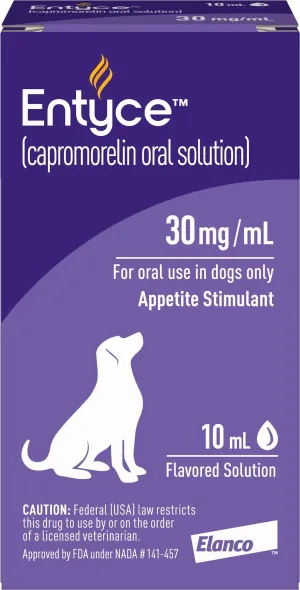ENCEPHABOL 100 mg coated tablets 100 pc, ENCEPHABOL, nootropics 100 mg, Dementia, lack of concentration
Areas of application ENCEPHABOL, nootropics 100 mg, Dementia, lack of concentration:
- Dementia, especially with memory disorders and lack of concentration Instructions for
ENCEPHABOL, nootropics 100 mg, Dementia, lack of concentration use:
The total dose should not be used without consulting a doctor or pharmacists are exceeded.
Type of application?
Take the medicine with liquid (e.g. 1 glass of water).
Duration of use?
The duration of use depends on the type of complaint and/or duration of the illness and is therefore only determined by your doctor. In principle, the duration of use is not limited in time, so the drug can be used for a longer period of time.
overdose?
There are no known overdose symptoms. If in doubt consult your doctor.
Forgot to take?
Continue taking it as normal (i.e. not double the amount) at the next prescribed time.
In general, pay attention to a conscientious dosage, especially for babies, small children and the elderly. If in doubt, ask your doctor or pharmacist about any effects or precautions.
A dosage prescribed by the doctor may deviate from the information on the package leaflet. Therefore, since the doctor adjusts them individually, you should use the medicine according to his instructions.
Mode of action:
How does the ingredient in the drug work?
The active ingredient improves the supply of oxygen and energy in the brain and has a beneficial effect on the flow properties of the blood. This can improve the metabolism in the brain and thus also the brain function.
Contraindications:
What speaks against an application?
Always:
- Hypersensitivity to the ingredients
Under certain circumstances - talk to your doctor or pharmacist about this:
- Changes in the blood count
- Restricted kidney function
- Limited liver function
- Autoimmune diseases (diseases in which the body's own immune system turns against its own body), such as:
- Lupus erythematosus
- Muscle weakness
- Pemphigus diseases (cystitis)
- Chronic polyarthritis
Which age group should be considered?
- Children and adolescents under the age of 18: The medicine should not normally be used in this age group.
What about pregnancy and lactation?
- Pregnancy: consult your doctor. Various considerations play a role in whether and how the drug can be used during pregnancy.
- Breast-feeding: consult your doctor or pharmacist. He will examine your particular starting position and advise you accordingly as to whether and how you can continue breastfeeding.
If you have been prescribed the drug despite a contraindication, talk to your doctor or pharmacist. The therapeutic benefit can be higher than the risk that the use entails in the event of a contraindication.
Side effects:
What side effects can occur?
- Gastrointestinal complaints, such as:
- nausea
- vomiting
- diarrhea
- loss of appetite
- taste disorders
- headache
- dizziness
- sleep disorders
- tiredness
- agitation
- Hypersensitivity reactions of the skin and mucous membranes, such as:
- skin rash
- itching
- liver dysfunction
- fever
If you notice any changes in your condition or changes during treatment, contact your doctor or pharmacist.
For the information at this point, side effects are primarily taken into account that occur in at least one in 1,000 patients treated.
Important information:
What should you consider?
- Be careful if you are allergic to binding agents (e.g. carboxymethyl cellulose with the E number E 466)!
- Be careful if you are allergic to Arabic gum (E number E 414)!
- Be careful if you are allergic to talc!
- Be careful if you are allergic to dyes (e.g. quinoline yellow with the E number E 104)!
- Be careful if you are allergic to wheat and rye flour, or if you have a pollen allergy (hay fever)!
- There may be medicines with which interactions occur. You should therefore generally tell your doctor or pharmacist about any other medicine you are already using before starting treatment with a new medicine. This also applies to medicines that you buy yourself, use only occasionally or have been using for some time.
Active substance: pyritinol dihydrochloride-1-water
To influence the cerebral performance disorders.
active ENCEPHABOL, nootropics 100 mg, Dementia, lack of concentration ingredients
- 100 mg pyritinol dihydrochloride-1 water
ENCEPHABOL, nootropics 100 mg, Dementia, lack of concentration excipients
- carmellose sodium
- magnesium stearate
- Silica, colloidal
- Carboxymethyl Starch, Sodium Type B
- lactose-1 water
- cellulose powder
- montan glycol wax
- gelatin
- Arabic gum
- Wheat flour
- clay, white
- talc
- sucrose
- titanium dioxide
- quinoline yellow
ENCEPHABOL, nootropics 100 mg, Dementia, lack of concentration indication
- The drug is an agent for influencing brain disorders (nootropic).
-
application areas
- Symptomatic treatment of chronic performance disorders caused by organic brain in dementia diseases with the following key symptoms: memory disorders, concentration disorders, thought disorders, premature fatigue, lack of drive and motivation, affect disorders.
ENCEPHABOL, nootropics 100 mg, Dementia, lack of concentration dosage
- Always take the medicine exactly as directed.
- Please check with your doctor or pharmacist if you are not sure.
- The following information applies unless your doctor has prescribed the medicine differently. Please follow the instructions for use, otherwise the drug cannot work properly!
-
Unless otherwise prescribed by the doctor, the usual dose is:
- Adults: 3 x 2 coated tablets of the preparation daily
- However, since the individual dosage of the preparation depends on the severity of the disease and the patient's response to therapy, you should always follow the dosage schedule recommended by your doctor.
-
duration of use
- The duration of treatment always depends on the clinical picture and is determined by your doctor. In the case of chronic illnesses, such as the consequences of craniocerebral trauma and dementia, therapeutic success can usually only be seen after 3 to 4 weeks of treatment. The optimal effect can usually be seen after 6-12 weeks. The duration of treatment for chronic diseases should therefore be at least 8 weeks until the effectiveness is assessed by a doctor.
- Please talk to your doctor or pharmacist if you have the impression that the effect of the preparation is too strong or too weak.
-
If you take more of the medicine than you should
- Based on experimental findings in animals and clinical experience, the toxicity of the preparation can be described as low. Cases of poisoning have not yet become known.
- If the medicine has been taken in too large a quantity, you should inform your doctor immediately.
-
If you forget to take the medicine
- If you have taken too little of the preparation or have forgotten to take it, then start taking it again regularly from the next scheduled time and continue to do so. If you frequently forget to take a dose, please speak to your doctor.
-
If you stop taking the medicine
- You should talk to your doctor before interrupting or prematurely stopping treatment.
- If you have any further questions on the use of the medicine, ask your doctor or pharmacist.
way
-
The coated tablets should be swallowed whole, preferably with some liquid, during or after you have eaten. The following distribution over the day is recommended:
- 2 coated tablets early morning, 2 coated tablets midday and 2 coated tablets early afternoon.
- Since older people suffer from sleep disorders more frequently, their aggravation should be avoided by not taking the last dose of the drug in the late afternoon or in the evening.
side effects
- Like all medicines, the preparation can have side effects, although not everyone gets them.
- The evaluation of side effects is based on the following frequency information:
- In addition to the desired main effects, drugs can also have undesirable effects, so-called side effects, which, however, do not occur in every patient.
-
When assessing side effects, the following frequency information is usually used as a basis:
- Very common: more than 1 in 10 people treated
- Common: less than 1 in 10 but more than 1 in 100 people treated
- Uncommon: less than 1 in 100 but more than 1 in 1,000 people treated
- Rare: less than 1 in 1,000 but more than 1 in 10,000 people treated
- Very rare: affects less than 1 in 10,000 people or unknown
-
When using the preparation in patients with dementia and conditions following craniocerebral trauma who do not suffer from chronic articular rheumatism at the same time, the following side effects can occur, which mostly resolve completely after discontinuation of therapy:
-
Blood and lymphatic system disorders
-
Very rare:
- Reduction in the number of white blood cells in the blood* (leukopenia), in individual cases up to agranulocytosis (severe reduction in certain blood cells).
-
Very rare:
-
Psychiatric disorders:
-
Occasionally:
- Increased excitability.
-
Occasionally:
-
Diseases of the gastrointestinal tract
-
Frequently:
- Nausea*, Vomiting*, Diarrhea*.
-
Frequently:
-
Liver and biliary diseases
-
Occasionally:
- Liver dysfunction* (e.g. transaminase increase, cholestasis).
-
Occasionally:
-
Skin and subcutaneous tissue disorders
-
Frequently:
- Rashes on the skin and mucous membranes*, itching*.
-
Very rare:
- lichen planus*, blistering (pemphigus-like) skin reactions*, hair loss*.
-
Frequently:
-
Musculoskeletal, connective tissue and bone disorders
-
Very rare:
- Muscle and joint pain*.
-
Very rare:
-
General disorders and administration site conditions
-
Frequently:
- Hypersensitivity of various degrees of severity*, rise in temperature*, sleep disturbances.
-
Occasionally:
- Loss of appetite, headache, dizziness, tiredness, taste disturbances*.
-
Frequently:
-
Blood and lymphatic system disorders
- In patients with chronic articular rheumatism, there is a presumably disease-related sensitivity to pyritinol. Therefore, side effects marked with * occur more frequently in these patients.
-
In addition, side effects typical of antirheumatic basic therapeutics can occur in these patients:
-
Blood and lymphatic system disorders
-
Occasionally:
- eosinophilia (increased levels of a subset of white blood cells), thrombocytopenia (decrease in the number of blood platelets).
-
Occasionally:
-
diseases of the immune system
-
Occasionally:
- Increased occurrence of antinuclear antibodies.
-
Very rare:
- Appearance of LE cells, autoimmune hypoglycemic syndrome.
-
Occasionally:
-
Diseases of the nervous system
-
Very rare:
- Paraesthesia (sensory disturbances, eg tingling, numbness, furryness).
-
Very rare:
-
Respiratory, thoracic and mediastinal disorders
-
Very rare:
- shortness of breath.
-
Very rare:
-
Diseases of the gastrointestinal tract
-
Frequently:
- Inflammation of the lining of the mouth (stomatitis).
-
Frequently:
-
Liver and biliary diseases
-
Very rare:
- Stagnation of the bile (cholestasis) and hepatitis (inflammation of the liver).
-
Very rare:
-
Skin and subcutaneous tissue disorders
-
Very rare:
- nail detachment.
-
Very rare:
-
Musculoskeletal, connective tissue and bone disorders
-
Very rare:
- Myasthenic symptoms (muscle weakness secondary to a neurological disorder), polymyositis, a muscle weakness due to an inflammatory disease of the skeletal muscles
-
Very rare:
-
Diseases of the kidneys and urinary tract
-
Frequently:
- Proteinuria (protein in the urine), very rarely up to nephrotic syndrome.
-
Very rare:
- hematuria (blood in the urine).
-
Frequently:
- For all side effects specifically mentioned for patients with rheumatoid arthritis as well as hypersensitivity reactions, rashes on the skin and mucous membranes, itching, nausea, vomiting, diarrhea, temperature increase, disturbances in taste, liver dysfunction, muscle and joint pain, leukopenia, lichen planus, blistering pemphigus-like skin reactions and hair loss, the drug should be discontinued immediately and, if necessary, symptom-oriented therapy initiated.
-
Blood and lymphatic system disorders
- Wheat starch can cause hypersensitivity reactions.
- Please tell your doctor or pharmacist if any of the side effects gets serious, or if you notice any side effects that are not listed.
interactions
-
When taking the preparation with other medicines:
- The effect and tolerability of medicines can be influenced by taking other medicines at the same time. Such interactions can also occur if the other drug has been taken for a short time.
-
If the preparation is taken at the same time, the side effects of medicines with gold content are likely to be increased, as well as those containing the following active substances:
- penicillamine
- sulfasalazine
- Levamisole
- No other interactions with other drugs have become known.
- Please inform your doctor or pharmacist if you are taking/using or have recently taken/used other medicines, even if they are non-prescription medicines.
Contraindications
-
The medicine must not be taken
- if you are allergic (hypersensitive) to pyritinol, wheat starch or any of the other ingredients of the preparation.
-
You should consult your doctor if you have:
- damaged kidneys
- severe liver dysfunction
- severe blood changes
- Immunological diseases that are acute or have occurred in your medical history, such as lupus erythematosus, pathological muscle weakness (myasthenia) or severe, blistering skin changes (pemphigus)
- Hypersensitivity to the active ingredient penicillamine
pregnancy and breast feeding period
- The available experience in humans and the data from animal studies indicate harmful effects on your pregnancy and the development of your unborn or newborn child if the drug is used as intended. Nevertheless, you should only take the preparation during pregnancy and breastfeeding after a careful risk/benefit assessment by your doctor. Please inform your doctor immediately if you are pregnant so that he can adjust your treatment if necessary.
patient ENCEPHABOL, nootropics 100 mg, Dementia, lack of concentration notes
-
Special care is required when taking the drug
- in patients with chronic articular rheumatism (rheumatoid arthritis). There is a presumably illness-related increased sensitivity to the active ingredient pyritinol. Therefore, regular clinical and laboratory medical check-ups should be carried out when treating these patients.
-
Driving and using machines:
- If the drug is used as intended, there are usually no restrictions on the ability to drive or operate machines. The same applies to work without a secure hold.
- Due to possible individually different reactions of individual patients, careful attention should be paid to possible impairment of the ability to react at the beginning of treatment and when the dose is increased.





















